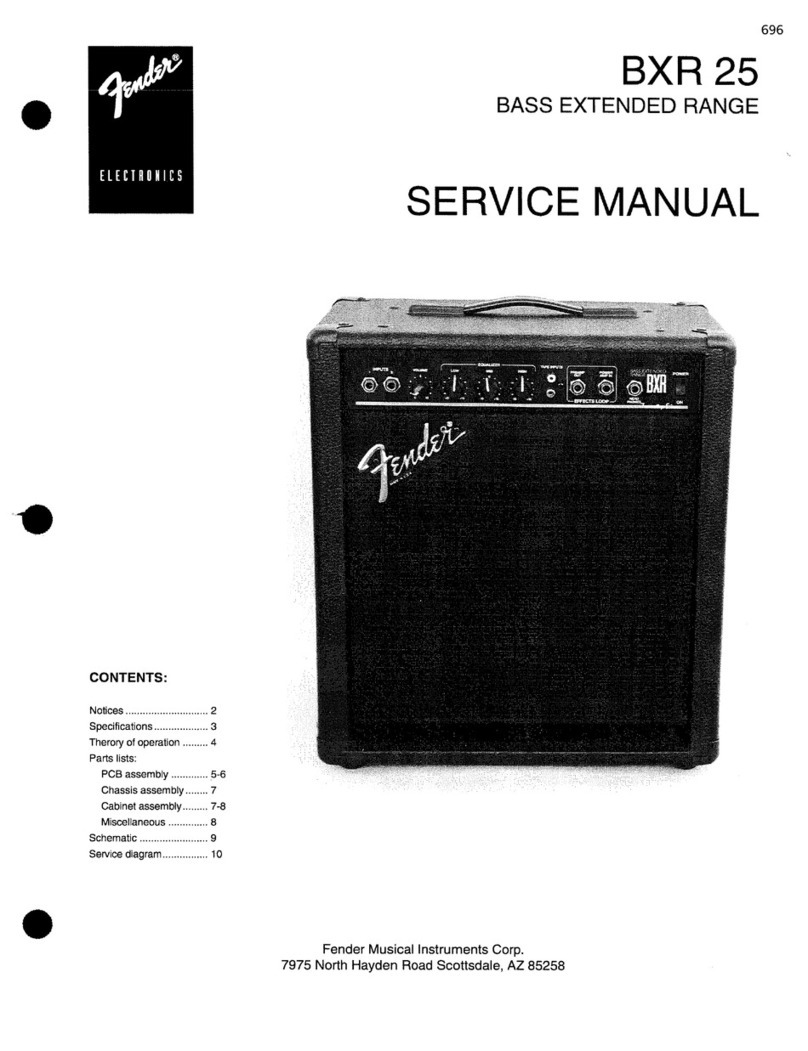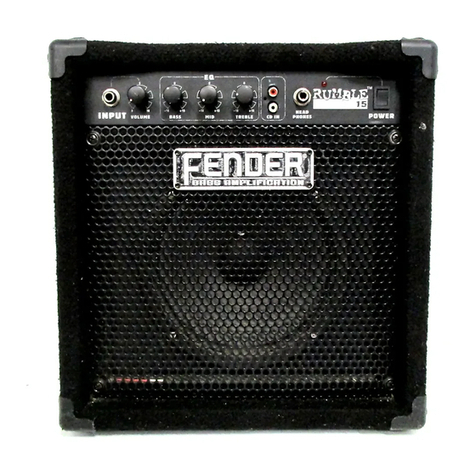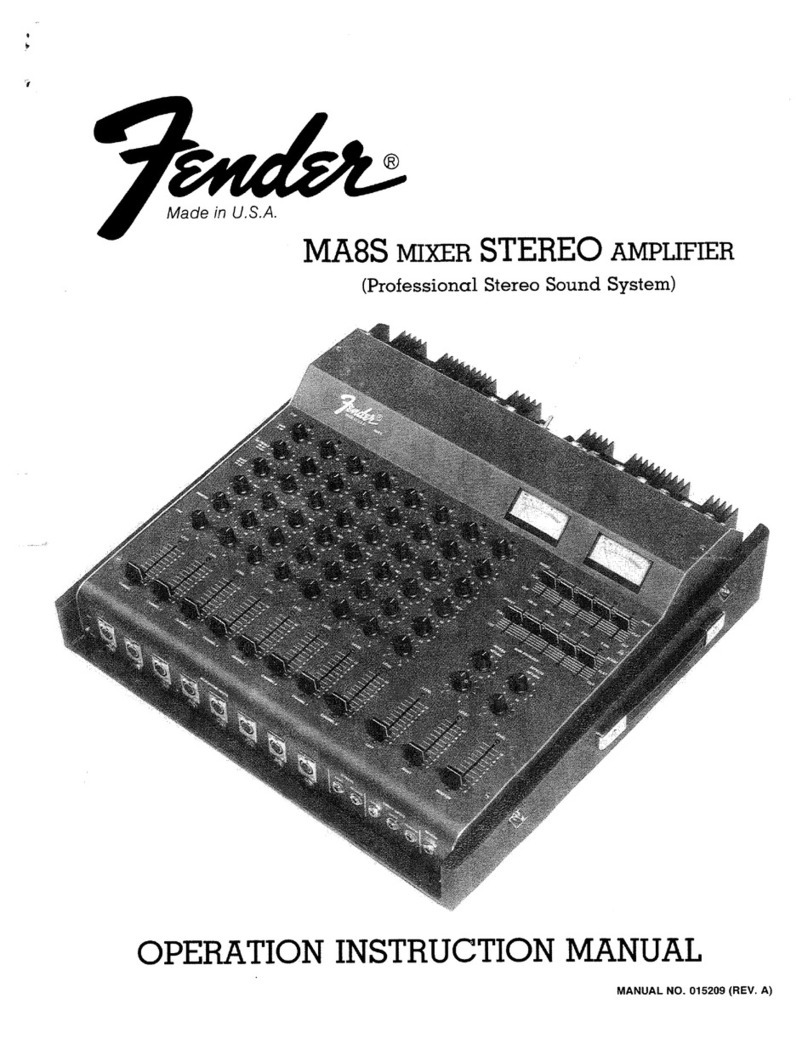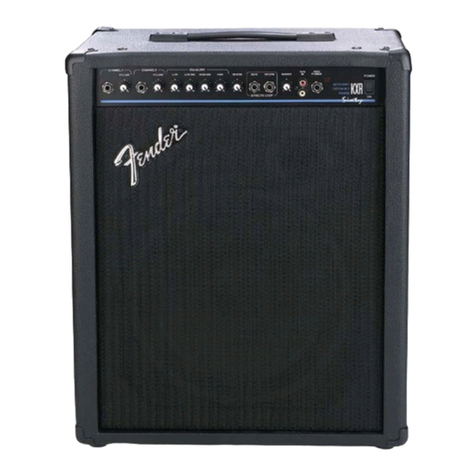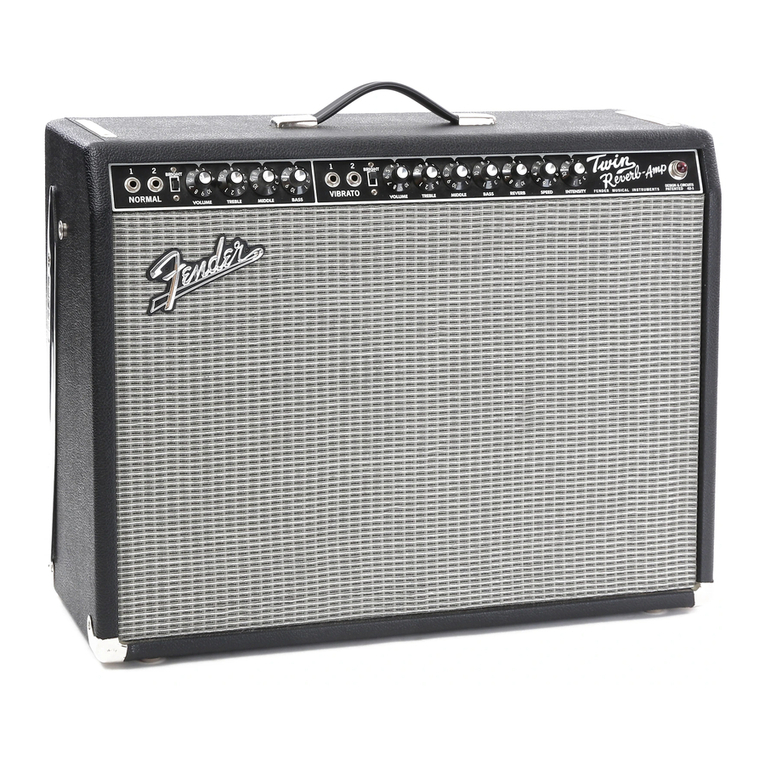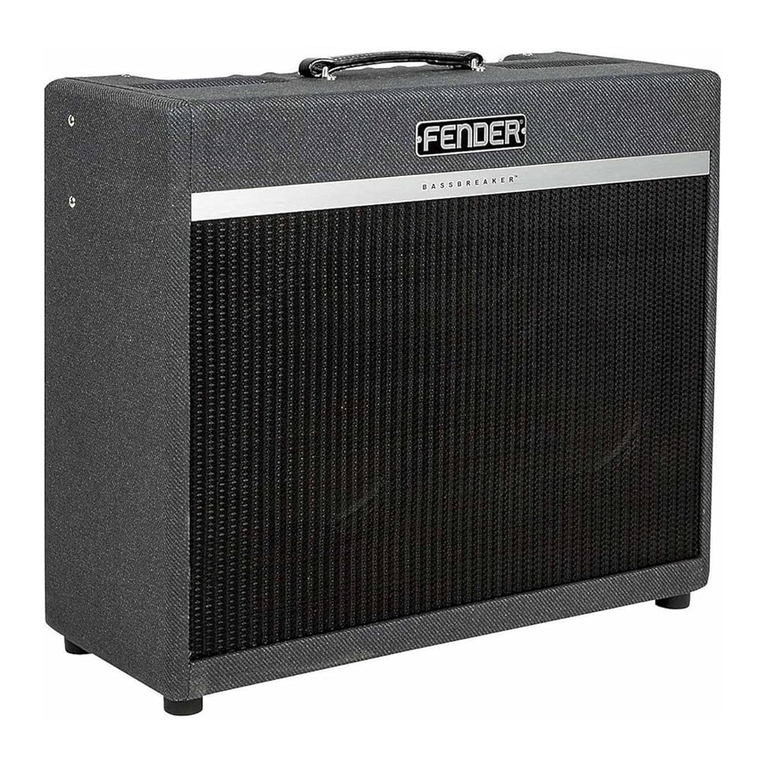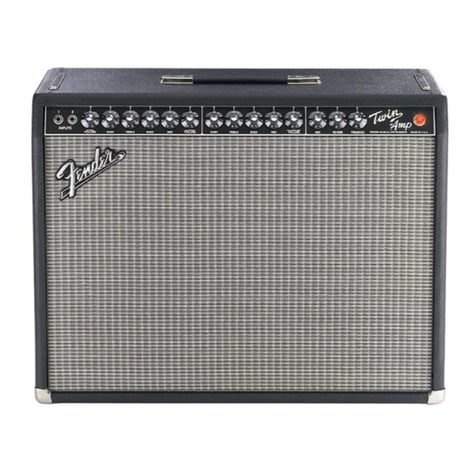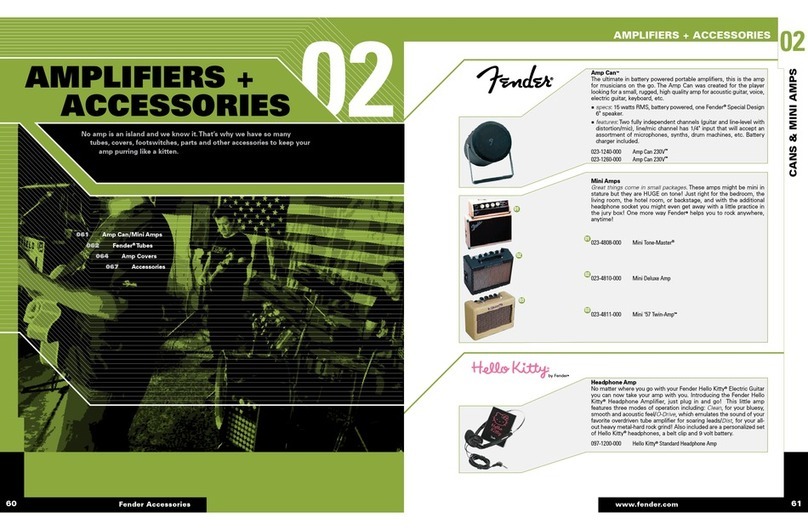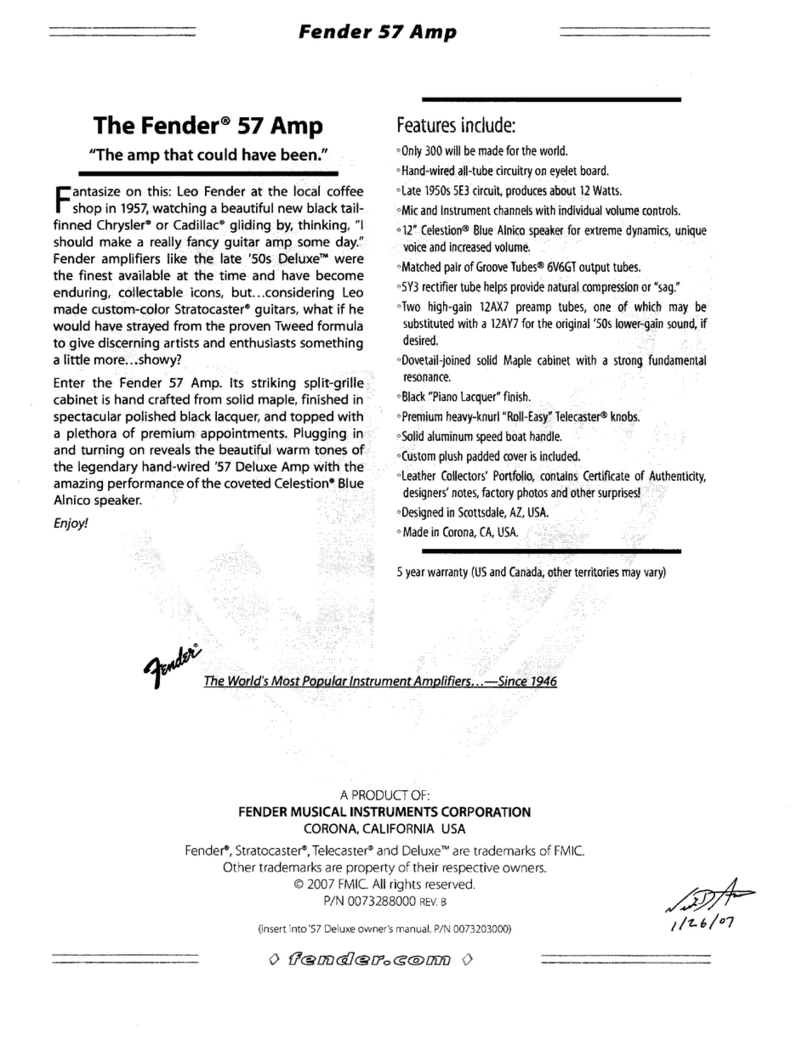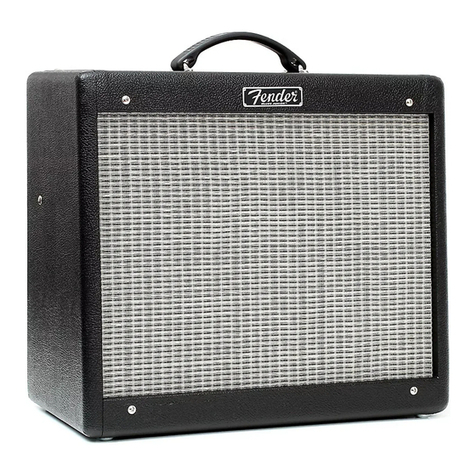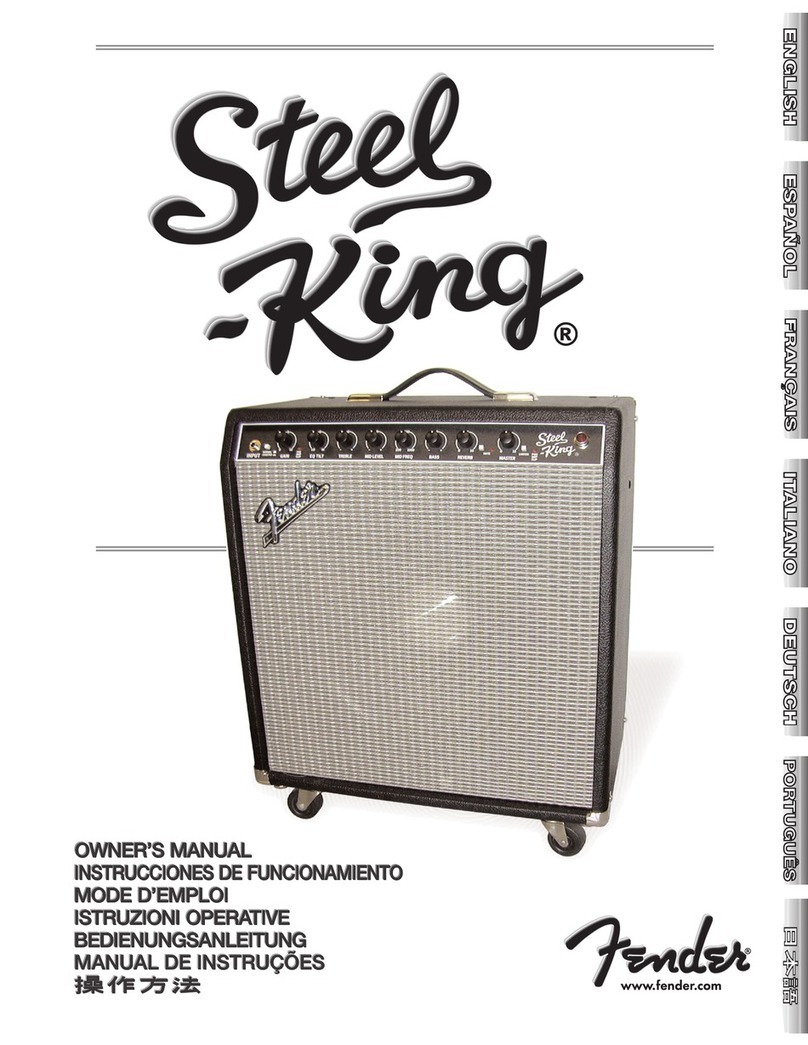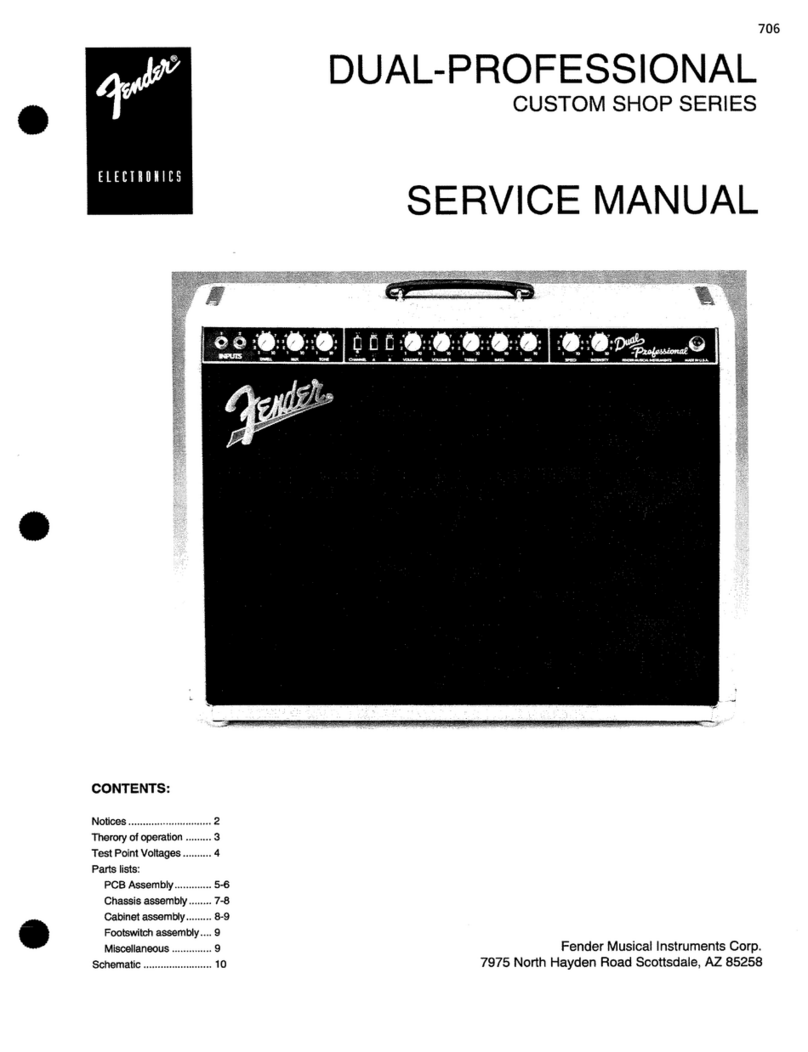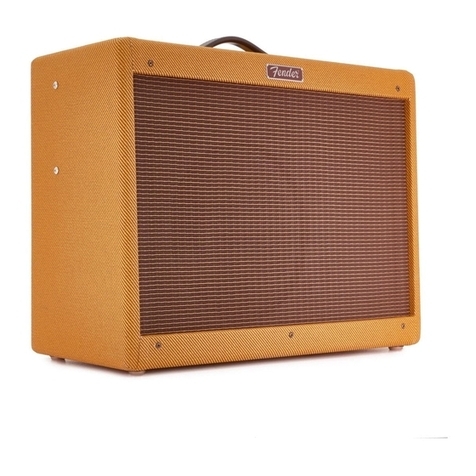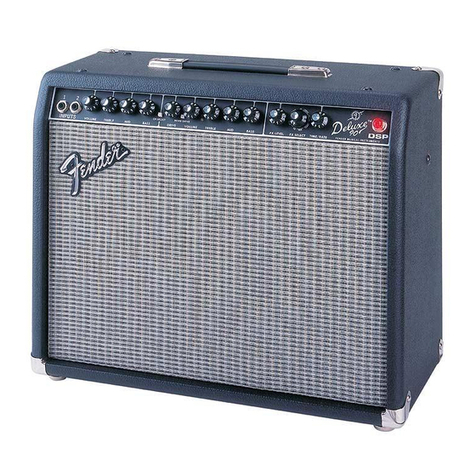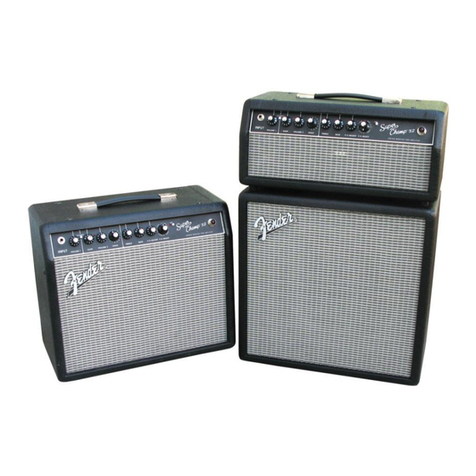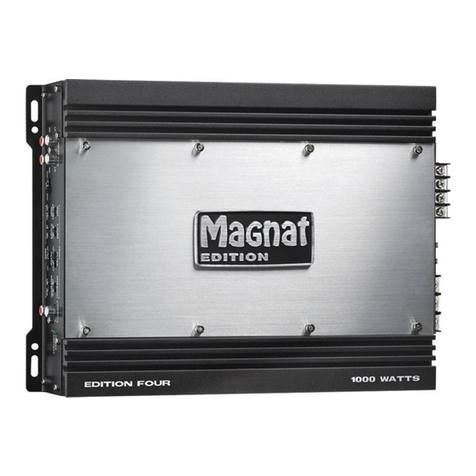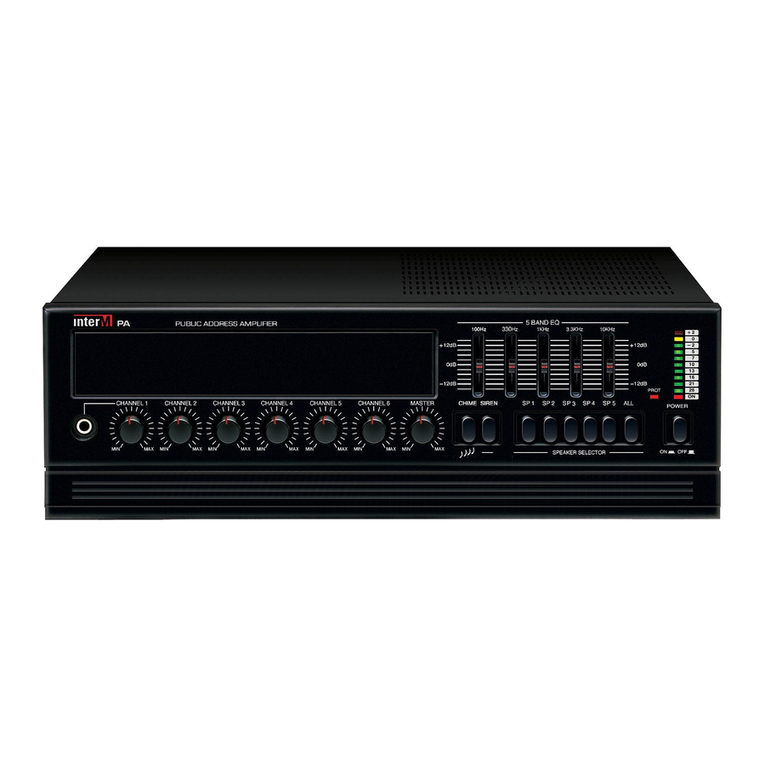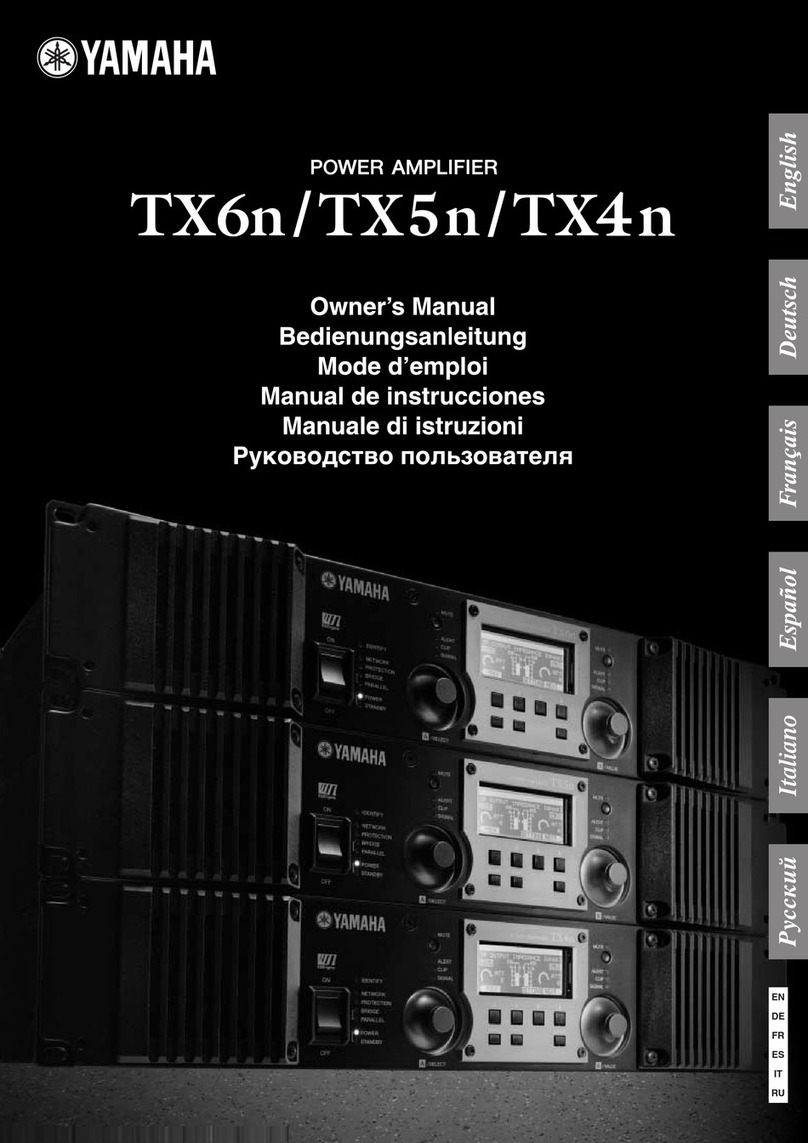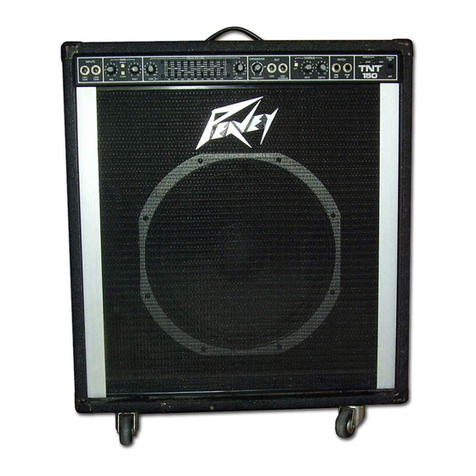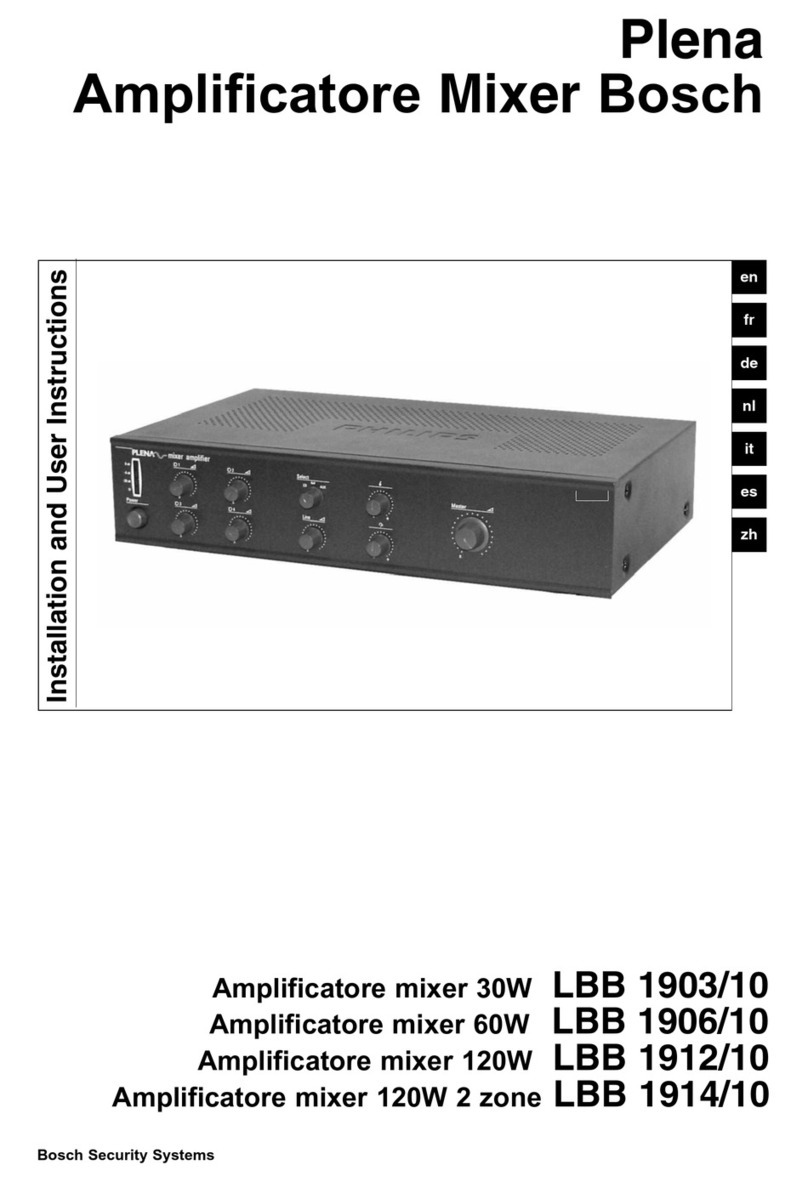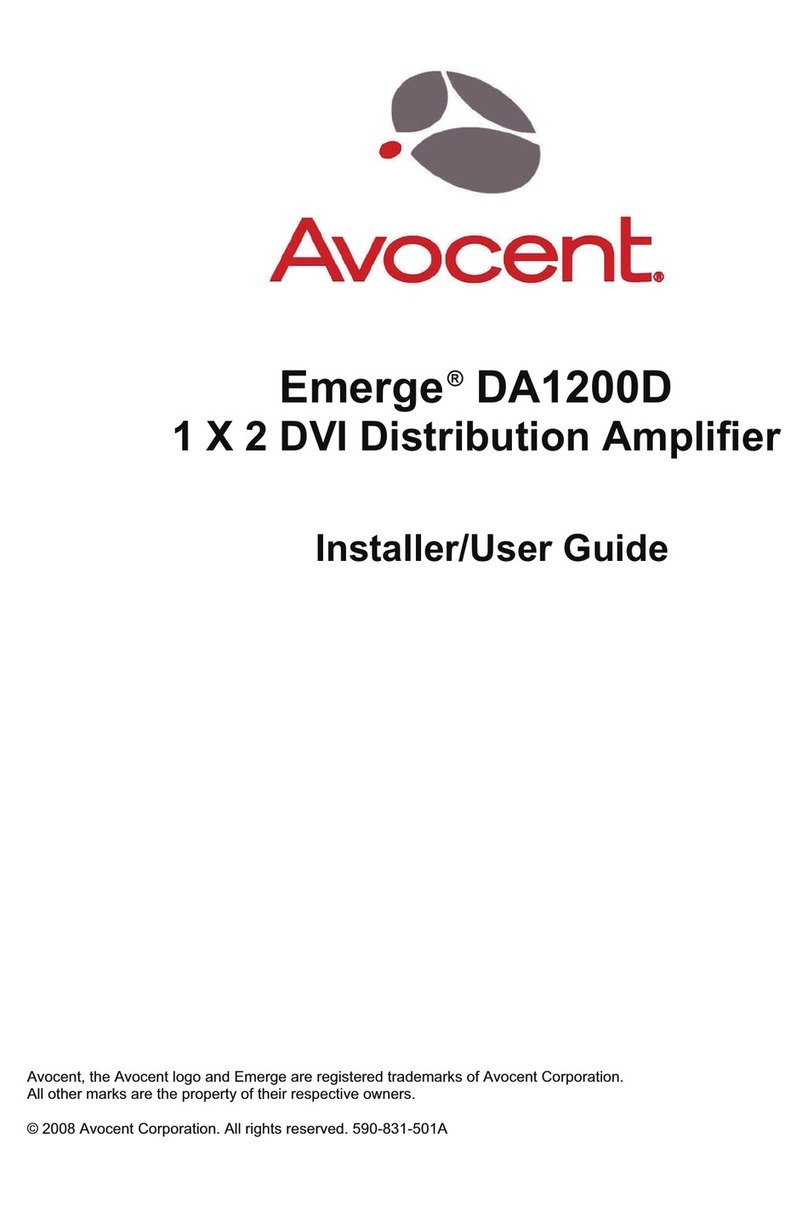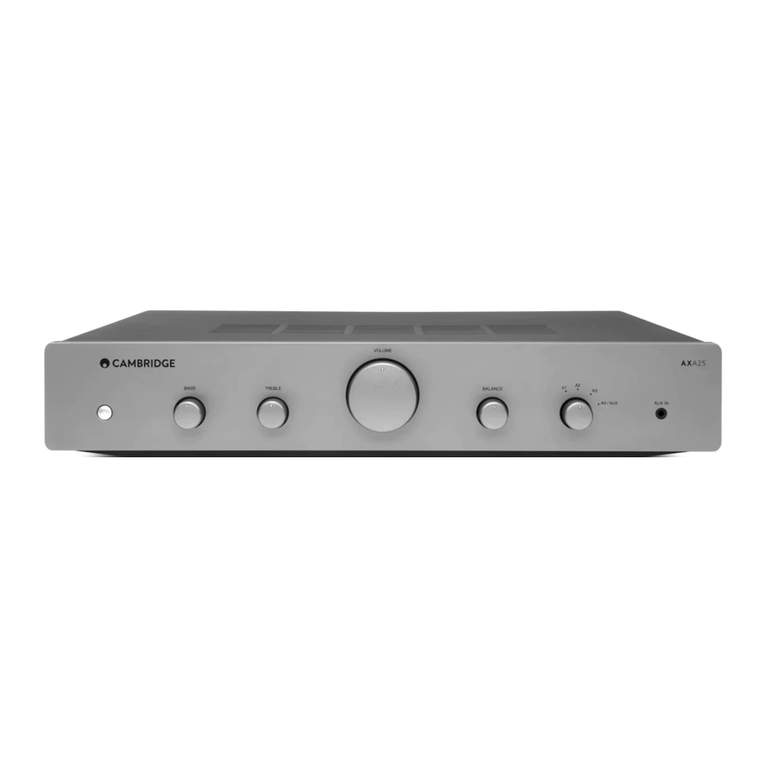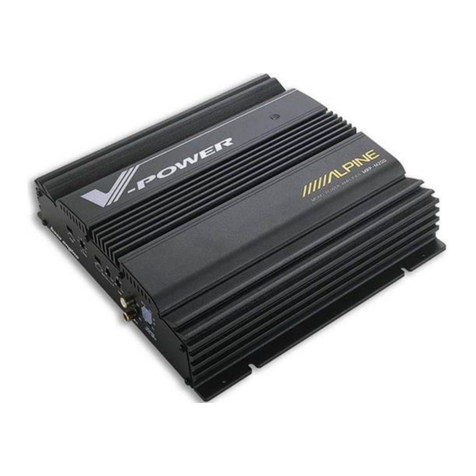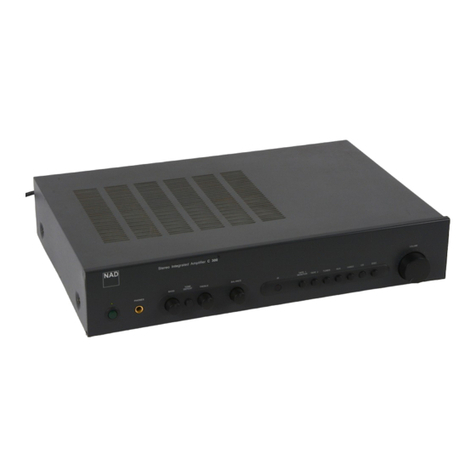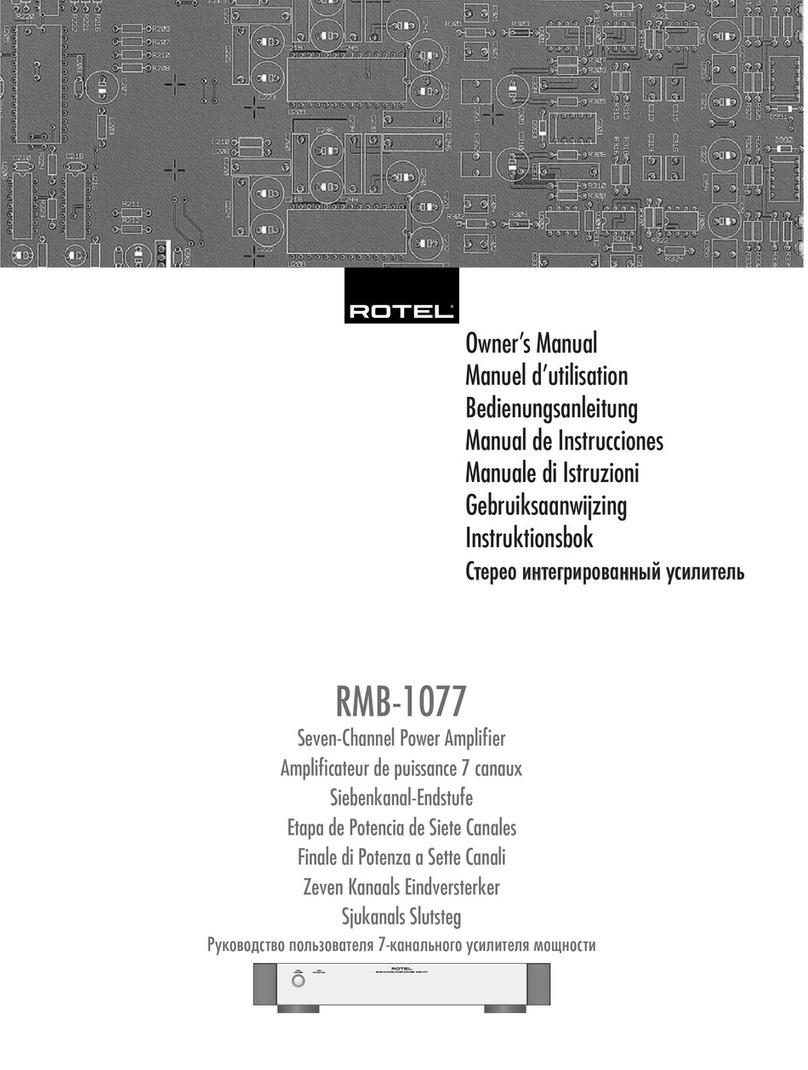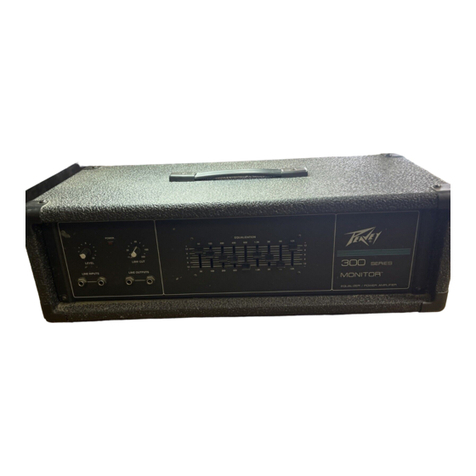
‘68 Custom Princeton®Reverb
(This is the model name for warranty claims)
SERVICE NOTES
CHASSIS REMOVAL is accomplished by first re-
moving the four (4) screws from the rear upper
panel. Unplug the white and red plugs on the Re-
verb cable from the Reverb Input and Output
respectively and also the Internal Speaker Output
cable. Now remove the two screws (4 total) screws
on the left and right nickel plated chassis straps on
the cabinet top. Pull the screws completely out of
the cabinet. The chassis can now slide out to the
rear, giving access to the electronics.
POLICY PCB EXCHANGE
Parts marked with a single asterisk (*) in the Part
Lists are not field replaceable. If a failure due to
one of these components is detected, please con-
tact the FMIC Customer Service Department to or-
der the complete PCB Assembly.
CIRCUIT DESCRIPTION
This section provides concise information about new
or unusual circuitry designs incorporated into this
amplifier model. The purpose is to aid the service
technician by providing insight into the design areas
most likely to become obstacles in troubleshooting.
Information is focused for its effective use while
maintaining the security of Fender® proprietary in-
formation wherever possible.
PRE-AMPLIFIER/REVERB
The guitar signal is input to J1 for high gain and J2
for lower gain. When both inputs are used, both
signals receive low gain. V1-A provides a single
gain stage that drives the tone stack. The tone
stack composed of R54 and R55 and associated
components provide treble and bass tone control
respectively. R53 provides volume control. V1-B
provides gain lost in the tone stack. The output from
V1-B is fed via C3, creating a high pass response to
the REVERB drive amplifier V2. The REVERB pan
is driven by impedance matching transformer T3.
The signal is also coupled to the V3-B intermediate
gain stage which acts as a mixer of the clean signal
and the recovered reverb signal from the REVERB
recovery amplifier V3-A.
TREMELO
V4-A is an R-C phase shift oscillator with the phase
shift network provided by (R21+R11)/C6, C21/R15
and C20/R16. The oscillator rate is controlled by
SPEED control R21 in the first leg of the phase shift
network. The rate is approximately from 0.5 Hz to 5
Hz. The output of the oscillator is applied through
the INTENSITY control R24 which injects a modu-
lating signal on top of the negative D.C. grid bias of
the output push-pull amplifier tubes (V5 & V6). The
variation of the bias point by the signal varies the
gain of the output stage at the TREMELO rate cre-
ating an amplitude modulated vibrato effect.
POWER AMPLIFIER
Phase splitter V4-B is driven by V3-B. Output from
the phase splitter drives the upper power amp tube
V5 from the plate of V4-B and the lower power tube
V6 from the cathode of V4-B. V5 and V6 act as a
push-pull pair in a class A-B power amplifier. T1
matches the 6L6 plate impedance to the speaker
load.
